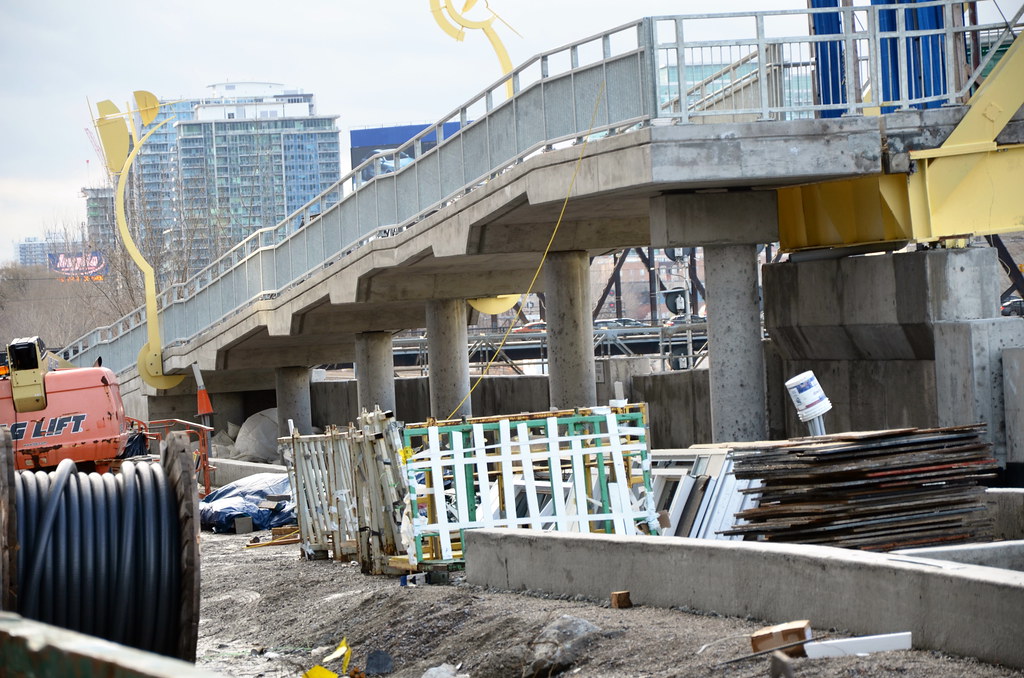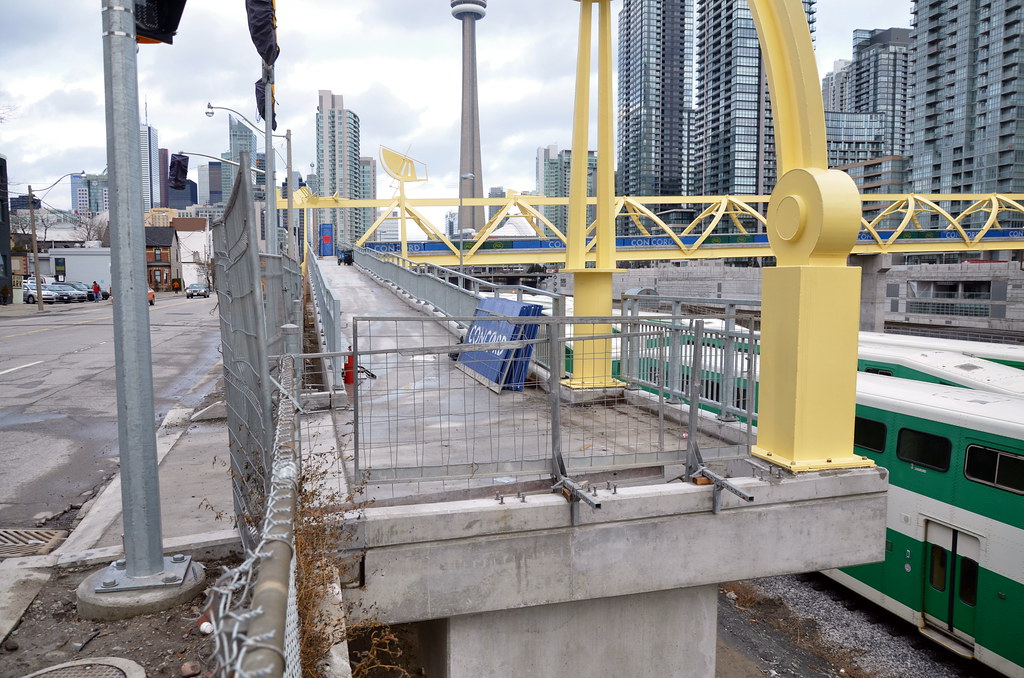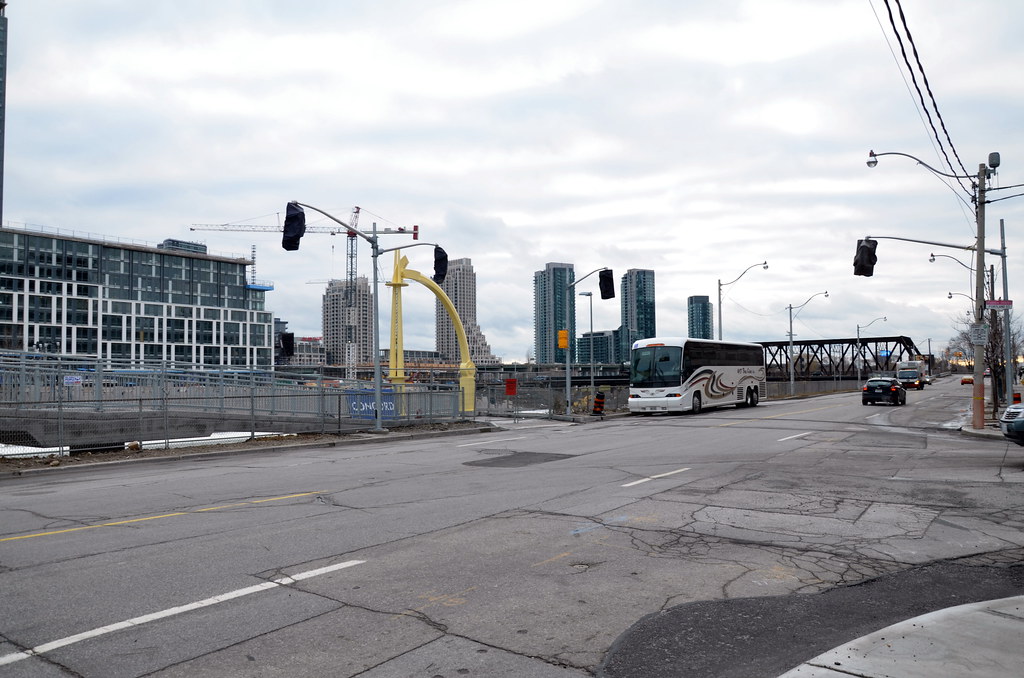neubilder
Banned
How very Canadian. /\
IMO it's a dubious claim.
IMO it's a dubious claim.
Last edited:
The placement of this bridge saddens me when I look down Portland Street and see the missed oppurtunity.





Also, how do you like the new GO engines compared to the old ones? I really liked the look of the old ones more.
Finally, when you drive the trains 'backwards' with the engine at the back, how is it done? Do you sit in the car and control the engine remotely or do you radio a guy back in the engine and tell him what to do? If a train car hits a car at a level crossing, are you in any danger? It seems if you hit it with your engine it would be no contest, but with a train car is it a little more dicey? Do you see people trying to cross level crossing when they shouldn't be?
Further to your comment on line of sight, I noticed on Friday that the mast tower over the flyunder by Bathurst are gone now and I think I saw a single light at the underside of the flyover on the south track heading east. Is that true or was I seeing odd? I don't remember seeing it there before. How hard is it on you if that is a signal there now since its on a curve?As Enviro mentioned, the column itself has little impact on sightlines. Its the bridge truss that would cause those issues. And as he put it, more politely than I did, it would indeed reduce GO's flexibility in the corridor which moves thousands, actually tens of thousands of people per day.
Are you really still going on about this?
And whats this about a "dubious claim"?
So no, GO didn't mandate the bridge to be in this location just to f*** over the community for the hell of it.